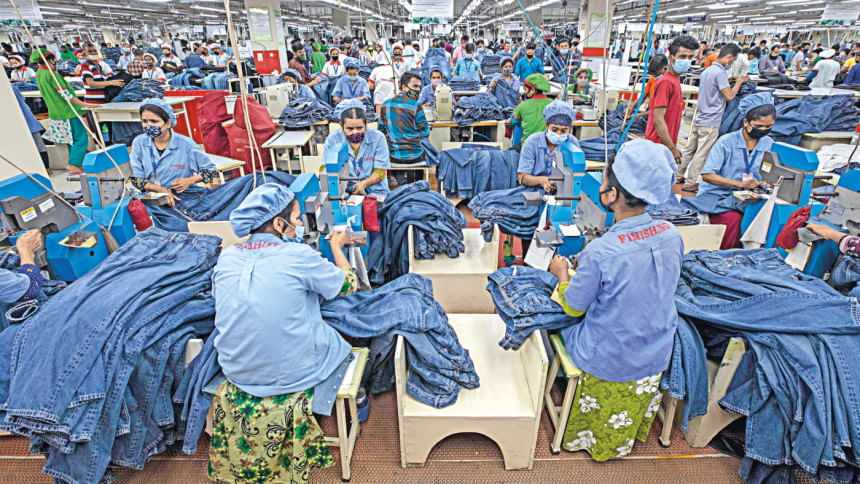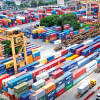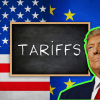How Bangladesh can absorb tariff shock

The Trump administration has imposed a 35 percent tariff on Bangladeshi goods, one of the highest rates so far. While the higher tariff reduces competitiveness in the US market, Bangladesh still holds strong prospects in the garment segment.
Garment products make up the majority of Bangladesh's exports to the US. Many are concerned about how the country will remain competitive under the new tariff structure.
Here's why Bangladesh still has reason to remain optimistic.
Bangladesh is a global leader in the production of basic and mid-range apparel items. These products are typically low-priced, and currently, few other countries can match Bangladesh in this segment.
American retailers and brands source these items at such low prices that they can absorb the 35 percent tariff and still make profits.
For example, a t-shirt bought from Bangladesh at $5 is often sold at $30–$35 in the US retail market. Even with the added tariff, buyers can raise retail prices slightly without facing consumer resistance. The burden of the tariff falls on the importer, not the Bangladeshi supplier, making it a manageable cost.
This pricing dynamic is likely to allow American buyers to maintain profitability while continuing to source garments from Bangladesh.
Since the reciprocal tariff announcement on April 2, a new cost-sharing model has emerged among suppliers, fabric manufacturers, and retailers. Each party is now bearing a portion of the tariff burden. This arrangement prevents the cost from falling entirely on one segment of the supply chain.
Vietnam faces a 20 percent tariff, and a steep 40 percent tariff applies to transshipped goods routed through Vietnam, targeting Chinese rerouting strategies. This 40 percent rate is five percentage points higher than Bangladesh's.
As a result, buyers seeking to avoid higher duties and transshipment risks may prefer sourcing from Bangladesh.
China's potential loss of market share could also translate into increased orders for Bangladesh, as Vietnam's capacity is already near saturation.
Even if India receives a more favourable tariff rate following ongoing negotiations, it still lacks the capacity to serve a significantly larger US market immediately. Building apparel production capacity takes years, as evidenced by India's gradual progress despite its strong cotton base and abundant labour.
According to the World Trade Organization, India exported $16.36 billion in garments in 2024, holding a 2.94 percent share of global apparel trade, ranking fifth after China, Bangladesh, Vietnam, Turkey, and Cambodia.
In comparison, Bangladesh retained its position as the world's second-largest apparel exporter with a 6.90 percent market share and $38.48 billion in exports in 2024.
Pakistan, despite having access to cotton and preferential tariffs, continues to lag in global apparel trade rankings.
Production costs in countries like South Korea, Japan, Turkey, and India remain high, making them less attractive to global apparel buyers. Bangladesh, on the other hand, maintains lower production costs while offering scale and experience.
Attempts by Myanmar and Ethiopia to enter the garment sector have faltered due to political instability and a lack of skilled labour. This further strengthens Bangladesh's position as a reliable sourcing destination.
Despite global headwinds, Bangladeshi garment exports to the US have shown strong performance. In the January–April period of this year, shipments rose by 29 percent year-on-year to $2.98 billion, according to data from the Office of Textiles and Apparel (OTEXA).
Over the past five years, Bangladesh has consistently ranked among the top 10 apparel exporters to the US. Between 2020 and 2024, exports to the US grew by 40.45 percent, from $5.22 billion in 2020 to $7.34 billion in 2024, demonstrating the resilience of local exporters amid various global and domestic challenges.
To sustain growth and remain competitive, Bangladesh must address infrastructure and utility issues. Efficient port operations, uninterrupted gas and power supplies, and streamlined logistics are essential to ensuring full-capacity production and timely shipments.
With these strategic advantages and necessary improvements, Bangladesh is well-positioned to weather the impact of the US tariff hike and continue expanding its share in the world's largest apparel market.
So, it is expected that the garment export from Bangladesh to the US will continue to grow in the future.

 For all latest news, follow The Daily Star's Google News channel.
For all latest news, follow The Daily Star's Google News channel. 





Comments